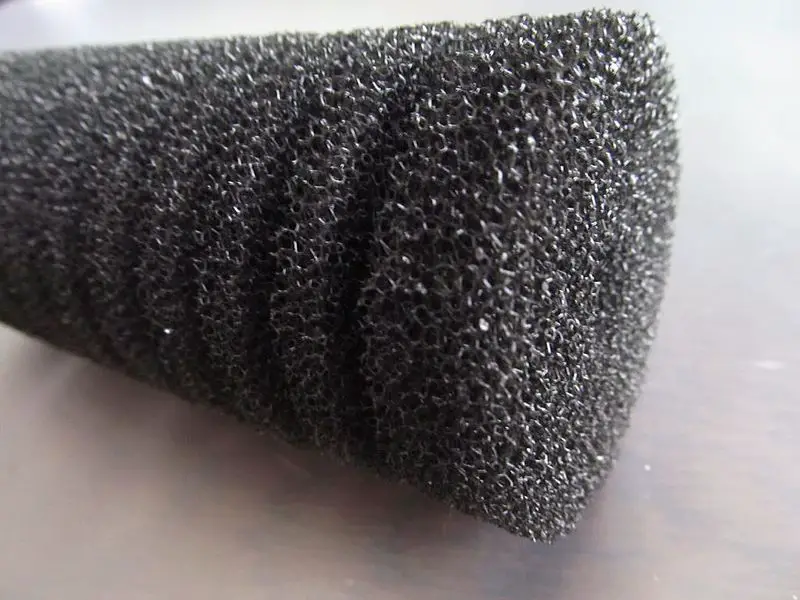No, you shouldn’t use cotton wool in your aquarium filter. The materials in cotton wool quickly break down when exposed to water. This means that within a short time frame, the cotton wool will stop filtering out harmful substances.
In fact, as it degrades, it may even add harmful materials to your fish tank. Cotton wool is often treated with antibacterial chemicals to help clean your hands. When used in a fish tank, they may make your fish sick or even kill them.
Cotton wool will keep water from freely flowing in your aquarium. Cotton wool contains mostly cellulose, along with a small amount of fat and water. All these substances are biodegradable, so they will break down over time. Since the cotton absorbs water, it will obstruct the flow of water through your aquarium, making the water cloudy and impure.
A much safer alternative to cotton wool is synthetic cotton, often called filter floss. This man-made cotton is created with polyethylene, which won’t break down over time. As an added benefit, filter floss is significantly cheaper than cotton wool. You’ll be able to keep your tank clean and healthy for longer while spending less money.
Can You Use A Pond Filter For An Aquarium?
Yes, you can use a pond filter in your aquarium as long as it fits. First, let’s discuss pond filters. Because ponds are large, their filters need to be able to clean large amounts of water very efficiently. To make this possible, pond filters have large boxes that water flows through.
This box typically sits on the bottom of the pond, where gravity pulls the water towards the filtration device. Once filtered, the water is returned to the pond.
Aquarium filters, however, come in many different sizes. This added convenience allows you to choose the right-sized filter for your specific aquarium. They are cost-effective and long-lasting. The two main types of aquarium filters are sponge and hanging filters.
These filters use air pumps and tubing to cycle water through the tank as it’s being filtered. Sponge filters are washable and reusable. Hanging filters are a bit more expensive to purchase and require the use of replacement cartridges, but they last a very long time and are easy to move.
If you’re looking for the best filter choice for your aquarium, a filter designed for aquarium use is the easiest, cheapest option. Finding an aquarium filter that fits in your specific tank is simple, while pond filters only fit in extremely large aquariums. Aquarium filters are also easier to clean and move since they are placed on the side of the tank rather than the bottom.
Can I Use A Dish Sponge For An Aquarium Filter?
No, you shouldn’t use a dish sponge as a filter in your aquarium. While it seems convenient, dish sponges contain extremely harmful chemicals that will leach into your aquarium water and may injure or kill your fish. Many dish sponges contain magnesium chloride, which is a moisturizing agent.
While this is great for cleaning dishes, it’s actually incredibly harmful for your fish. Many dish sponges also have detergents or cleaning agents in them, which can kill your fish.
Dish sponges also aren’t nearly as effective as sponges intended for use in aquariums. Sponges designed for use in aquariums are as porous as possible. This helps as much water to flow through the sponge as possible while filtering out debris.
Kitchen sponges aren’t nearly as porous as aquarium sponges. Some dish sponges even have abrasive materials designed to help scrub off grease from dirty dishes. This greatly inhibits the amount of water that flows through the sponge, making it much less effective.
Though you can technically use a dish sponge for an aquarium filter if it’s free of harmful chemicals, it’s incredibly dangerous to do so. Even if the packaging doesn’t explicitly say it’s not designed for use in an aquarium, the sponge may still have chemicals that are damaging to fish.
Since sponges aren’t made for human consumption, it can be difficult to even find a list of chemicals used to produce the sponge. Dish sponges also cost about the same as an aquarium sponge, so there’s no economical reason to choose a dish sponge over an aquarium-designed one.
Unless it’s an absolute emergency, and you’re sure there are no harmful chemicals, you’re much better off to use an aquarium sponge.
Can You Reuse Aquarium Filter Cartridges?
Yes, you can reuse aquarium filter cartridges, though not in the way you might imagine. You need to place new cartridges in your filter when you clean it, but keeping the old cartridge in the filter for a couple of weeks helps to keep good bacteria in your fish tank. Good bacteria grow and collect on the surface of your filter cartridge, so removing and replacing the cartridge will leave your tank without good bacteria.
To avoid this, many aquarium filters have slots for two cartridges: an older, used cartridge and a new, unused one. To change out your filter cartridge when you clean your tank, move the used cartridge from the front slot to the back one.
Then, take the new cartridge out of its packaging. You need to rinse it before adding it to the filter, but it’s very important to rinse it in old tank water (such as the water you removed when cleaning the tank) and never in fresh water. After rinsing, place the new cartridge in the front slot of the filter. Allow the good bacteria to transfer to the new cartridge for two weeks before removing the old one.
Some companies also make reusable filter cartridges that you can rinse in old tank water, but doing so will kill all the good bacteria. Your best bet is to add a new filter cartridge in front of the old one, removing the old cartridge after a couple of weeks so that good bacteria begin to grow on the new cartridge.


